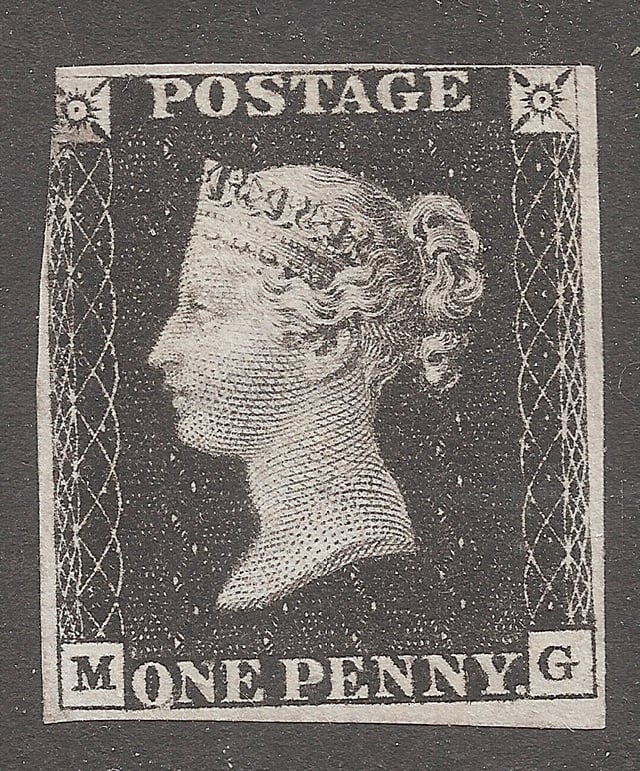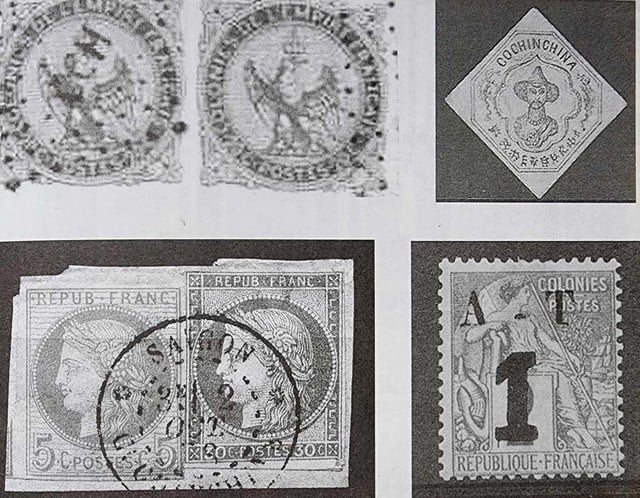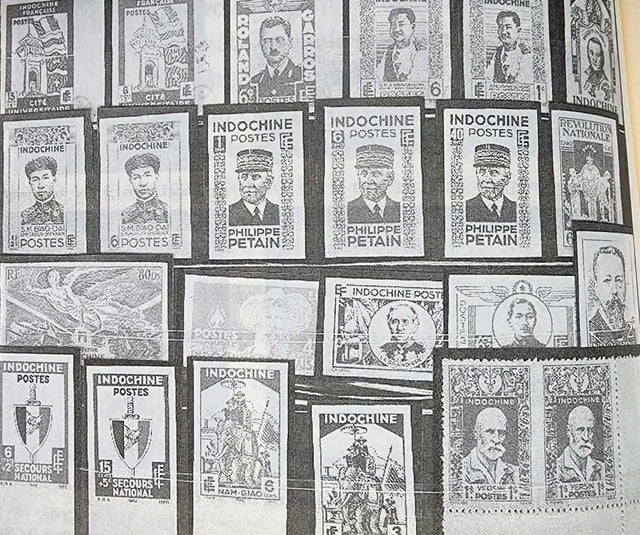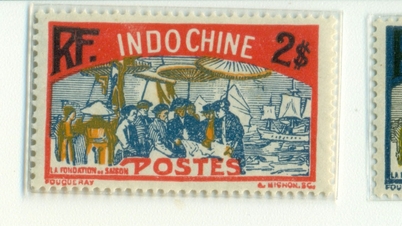In 1838, a famous Englishman in London (England) named Rowland Hill happened to witness a unique incident in the field of mail. One day, he was sitting in a cafe when the postman came to give the maid there an envelope. After carefully observing the envelope, the girl returned it to the postman and refused to pay the postage. R. Hill asked for permission to pay on her behalf but the girl firmly refused. This made him suspicious and tried to understand the mysteries in her behavior. Finally, he realized that she and her lover had communicated with each other through a special mark on the envelope. After grasping the content on the envelope, the girl returned the letter to avoid paying the postage.

The world 's first stamp issued in England in 1840
Photo: www.ebay.co.uk
This accidental discovery inspired R. Hill to write a pamphlet entitled Post-office reform , recommending that postage charges be collected in advance through a stamped piece of paper on the envelope. The initiative was supported by the British business community and parliament. A competition was held across Britain to specify the fundamental changes in the postal industry: uniform pricing and pre-collection of postage. A drawing by a medal engraver, W. Wyon, based on the "stickable label paper" method, was the finalist along with a number of other innovations, including Mulready's invention of a pre-printed stamped envelope.
On May 6, 1840, the whole of Britain entered a real postal reform. The public was invited to affix a black label bearing the image of Queen Victoria and the words "postage" and "one penny" to their envelopes. What surprised them most was that the postage rate of 1 penny applied throughout the whole of Britain, a very modest rate compared to the previous method of payment.

Some of the first postage stamps in Vietnam (second half of the 19th century)
PHOTO: LE NGUYEN DOCUMENTARY
The postal workers were working frantically that day. The stamps were printed on a large sheet of paper, not perforated like today, so the task of cutting them out one by one was very confusing. In addition, the public response was beyond the postal industry's expectations, and supply was not enough to meet demand.

Indochina stamps of the first half of the 20th century
PHOTO: LE NGUYEN DOCUMENTARY
In just a short time, the "1 cent stamp" initiative of the foggy country was boldly applied by many other governments: Brazil and some cantons in Switzerland in 1843, the US in 1847, Belgium and France in 1849. In France, this initiative was submitted long ago but the National Assembly rejected it in 1845. It was not until after the 1848 revolution that the new Postmaster General Etienne Arago boldly introduced postage stamps into the daily life of the people in France.
Eagle stamps
In Vietnam, on May 30, 1863, the public was officially informed about the birth of the first postage stamps in Vietnam. The announcement of the Saigon Post Office had the following content:
"1/ From June 1, all letters, newspapers and publications sent inside or outside the colony will be affixed with colonial postage stamps.
2/ Colonial postage stamps have 4 types and 4 following price schedules:
1- Orange stamp 0.04 (quan)
2- Brown-gray stamp 0.10
3- Green stamp 0.05
4- Gray stamp 0.01
3/ Stamp sales take place every day except Sundays and holidays at the Saigon facility and postal facilities established under the current May 30 decision…”.
( Official Gazette of French Cochinchina {BOCF} 1863, p. 352).
The first stamps were square with an eagle printed on them. The colonial government unified the price list for letters sent within the city, letters sent from Saigon to the provinces and vice versa, or letters sent from one province to another, differing only by weight, for example: Letters weighing up to 10 grams were stamped with 0.10 French quan; from 10 to 20 grams were stamped with 0.20 quan; from 20 to 100 grams were stamped with 0.40 quan; from 100 to 200 grams were stamped with 0.80 quan; from 200 to 300 grams were stamped with 1.20 French quan.
By 1864, the public had widely used postage stamps issued by the colonial government within the localities that had fallen into the hands of the French: Saigon, Bien Hoa, Can Giuoc, My Tho, Cho Lon, Tan An, Tay Ninh, Go Cong... A letter from Saigon to My Tho took 21 hours, and from Saigon to Go Cong took 16 hours.
During this time, the Nguyen Dynasty's station organization in Cochinchina had not yet been abolished by the French colonialists. (to be continued)
Source: https://thanhnien.vn/sai-gon-xua-du-ky-tem-thu-sai-gon-185251112225020581.htm


![[Photo] Unique architecture of the deepest metro station in France](https://vphoto.vietnam.vn/thumb/1200x675/vietnam/resource/IMAGE/2025/11/14/1763107592365_ga-sau-nhat-nuoc-phap-duy-1-6403-jpg.webp)

![[Photo] Unique art of painting Tuong masks](https://vphoto.vietnam.vn/thumb/1200x675/vietnam/resource/IMAGE/2025/11/14/1763094089301_ndo_br_1-jpg.webp)

![[Photo] Special class in Tra Linh](https://vphoto.vietnam.vn/thumb/1200x675/vietnam/resource/IMAGE/2025/11/14/1763078485441_ndo_br_lop-hoc-7-jpg.webp)





























![[Photo] Deep sea sand deposits, ancient wooden ship An Bang faces the risk of being buried again](https://vphoto.vietnam.vn/thumb/1200x675/vietnam/resource/IMAGE/2025/11/13/1763033175715_ndo_br_thuyen-1-jpg.webp)






































































![Dong Nai OCOP transition: [Article 3] Linking tourism with OCOP product consumption](https://vphoto.vietnam.vn/thumb/402x226/vietnam/resource/IMAGE/2025/11/10/1762739199309_1324-2740-7_n-162543_981.jpeg)





Comment (0)